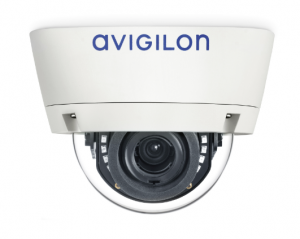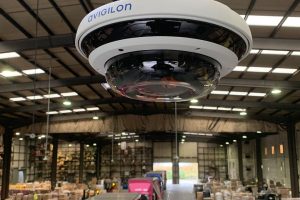Ready to upgrade your surveillance system?
Contact Us, and we’ll get started.
Site security has long since been a priority for site managers and business, and video surveillance systems have been one of the more powerful tools in their kit. A well-designed surveillance system can provide a powerful deterrent to reckless or criminal behavior. And, in the event of an incident, investigators look to CCTV footage to provide evidence.
However, many of the surveillance systems being used in Alberta are aging, analog camera systems that rely on coaxial cabling to transmit information back to security offices. While HD analog may have come a long way, analog cameras leave much to be desired when compared to IP cameras, especially in the domains of image quality, analytics, and coverage.
If yours is one of the businesses still using analog cameras, it might be time to consider an upgrade to IP cameras. If you’d like to start a conversation on what that would look like, feel free to Contact Us.
Or, keep reading to see how the two CCTV camera types stack up against each other. Let’s start with some quick descriptions.
Analog CCTV Cameras
Analog CCTV cameras capture footage and imagery and transmit that information, by means of a coaxial cable, to a storage device called a DVR, or digital video recorder. The DVR converts the analog signal to digital so it can be stored on a hard drive for future use. The DVR can also be connected to a router, which is capable of distributing the information across a network.
IP CCTV Cameras
IP CCTV cameras record information digitally to being with. The information is transmitted across a network, either wirelessly via Wi-Fi or ethernet cable, to a device called a network video recorder (NVR). The NVR records the digital footage and images and stores them on a hard drive, often on a computer dedicated solely for video management. Notice that there is no need for a DVR. Because the information was transmitted digitally in the beginning, there is no need for a boxy piece of hardware, like the DVR, to covert the signal.
With that in mind, let’s get into the pros and cons of analog and IP security cameras.
Benefits of Analog Cameras
Cost
Cost is the first consideration most business owners look at, and it’s a fair one. Because they are older tech, analog CCTV cameras tend to be cheaper. Even HD analog cameras won’t cost as much as an IP unit. That said, the gap in price will close as you invest in an HD analog camera with more features. Eventually, you’ll have to ask yourself if the continued investment in older technology is really worth it.
Simplicity
Another benefit of analog CCTV is its simplicity. There isn’t much in the way of a learning curve when it comes to monitoring the footage or operating the cameras. And, because the technology has been around for some time, there are many installers with the skill set required to put your system in place.
Lower Bandwidth Use
Because the image quality on an analog CCTV system is generally lower, the demand on your network is lower. The lower resolution imagery and the footage don’t put the same kind of demand on your network as higher-resolution content would. Add to that the fact that DVRs typically only transmit when the footage is being monitored by security personnel (rather than continuously), and you could be looking at some cost-savings on the network side.
Drawbacks of Analog CCTV
Frame Rate and Image Quality
The lower bandwidth requirements of analog CCTV systems aren’t all good news. Lower bandwidth means a lower frame rate (frames per second). Because of this, analog CCTV is not ideal for areas with a lot of foot or vehicle traffic, like parking lots and shopping malls. And, because of the data limitations of coaxial cable, you can’t expect high-resolution imagery unless you invest in HD analog systems, which can achieve resolutions up to 4 MP.
With grainy, low-resolution imagery and choppy video, your security team could face challenges identifying key people, vehicles, and actions when monitoring security feeds. This could make investigations more frustrating and less fruitful, but it could also make it harder to quickly identify incidents in progress. That means longer security response times.
Less Coverage Per Camera
Analog CCTV cameras can’t cover the same area as an IP unit. They don’t have the same range capabilities as IP cameras, meaning that multiple analog cameras are needed to monitor the same area that a single IP camera could cover. That means additional costs on hardware, cabling, installation, and maintenance.
More Cabling Will be Required
IP CCTV cameras can actually run on Power Over Ethernet, or PoE, meaning that only a single ethernet cable will be required to power the camera and transmit data. Analog cameras can’t do this. They need a dedicated power cable. This means twice as much cabling running to each camera, which leads to additional installation and cabling costs. And, with twice as much cable running around your facility, there is a greater chance of mistakes being made in your cabling layout. You could face higher maintenance costs and camera outages as the system ages.
A Lack of Encryption
An analog CCTV feed can’t be encrypted. That means it’s easier for an outside party to watch your security feed, or even interrupt it. The more sensitive your operation, the more this becomes a risk to avoid. IP CCTV systems can be encrypted, significantly mitigating this risk.
Benefits of IP CCTV Cameras
Multiple Sensors
IP CCTV cameras can have multiple sensors in one assembly. This means that it’s possible to monitor multiple areas with a single unit and a single cable installation. The Avigilon camera seen to the right is capable of providing 360-degree coverage of its location. You would need four analog cameras, each running on their own cables, to achieve anything similar to this.
Image Quality
The higher bandwidth capabilities of IP CCTV systems mean you’re getting sharper images and higher resolution video, even as high as 4K and 8K. The data capabilities of ethernet cabling also mean higher frame rates, which make IP cameras a better solution in high traffic areas.
The value of better image quality almost goes without saying: Clearer imagery and footage make it easier to identify people, vehicles and activity of interest. A higher frame rate makes it easier to track events in real-time, allowing for security to respond more effectively.
Analytics
This may be the biggest advantage IP CCTV cameras and systems can offer to your security team. Some analog systems can provide basic analytics, like generic motion detection or loss of signal, but it pretty much stops there.
IP CCTV systems, on the other hand, can offer a powerful suite of video analytics to make the job of securing your facility one that can be accomplished with greater ease and efficiency. Analytics-based search tools like Classified Object Motion Detection can tell you what type of motion actually triggered the sensor, like a vehicle driving by or a person walking in view of the camera. Facial and License Plate Recognition lets security know who is on your property and alerts them if the person isn’t authorized. Unusual Motion Detection can tell you if someone is standing idle near a restricted area or driving erratically on a road you control.
An added benefit of these search tools is that they also create a record every time an alert is triggered. That means investigators watching CCTV footage can jump to the moment of an incident rather than being forced to watch hours of it in search of clues.
Drawbacks of IP CCTV
Startup Costs
The initial costs may be higher than an analog system. You’ll need to lean on trained technicians with a specialized set of skills to design and install your system and the better-quality cameras and analytics software come at a bit of a markup, too. While you may find you recoup many of these costs when it comes to the ease of maintenance and scaling, you need to be prepared for a larger initial investment.
A Learning Curve
Manufacturers like Avigilon have gone out of their way to make learning how to use high-end cameras, analytics, and video management systems easy, but some training will still be required.
Getting Started
This was a quick overview of the pros and cons of analog and IP CCTV; if you plan on upgrading your system, or building a new one, a lot of planning and careful consideration of your options will be called for.
If you have any questions, or you’d like to start that planning process, Contact Us. Our Service Technicians and Account Managers are here to help.
Tridon is a full solution Telecom Systems Integrator with CSA certification and licensed by APEGA. Our Engineering, Service and Tower Divisions collaborate with customers to build engineered solutions including communications systems design, tower inspections, and co-location, wireless broadband, fiber optic cabling, site security, and two-way radio communication.






